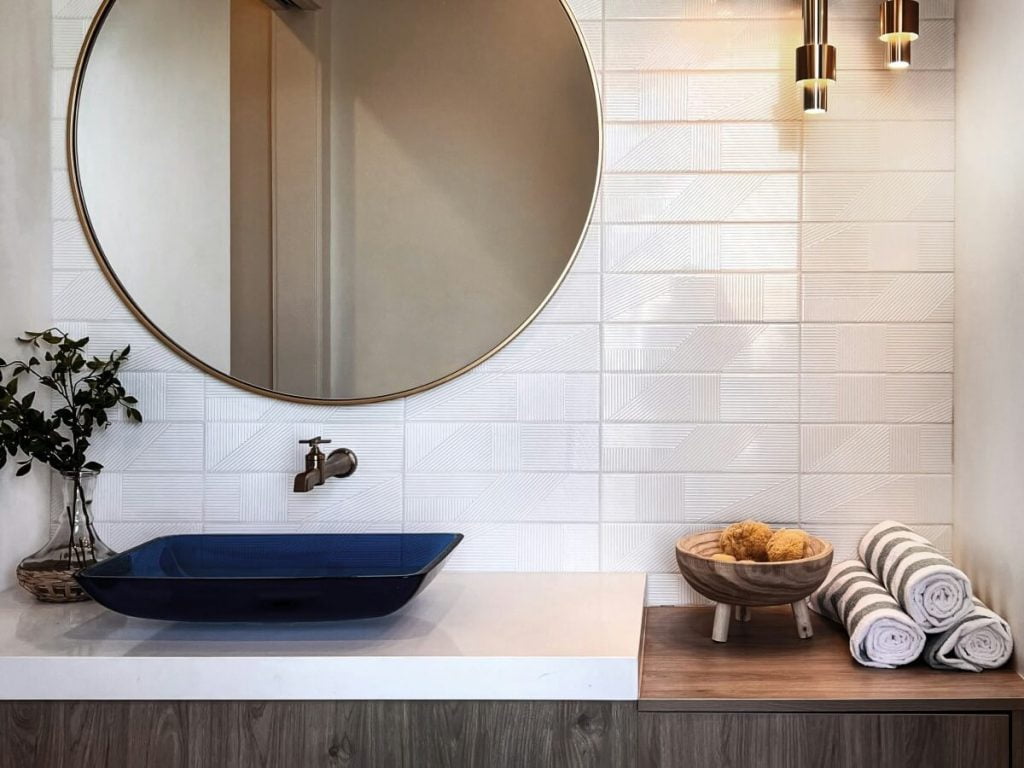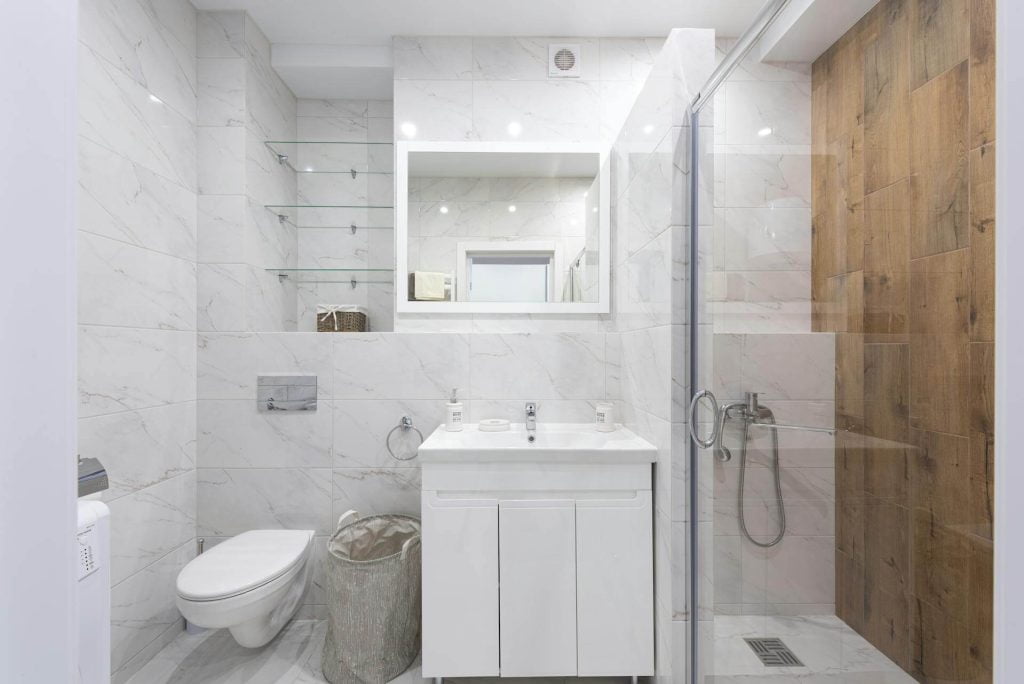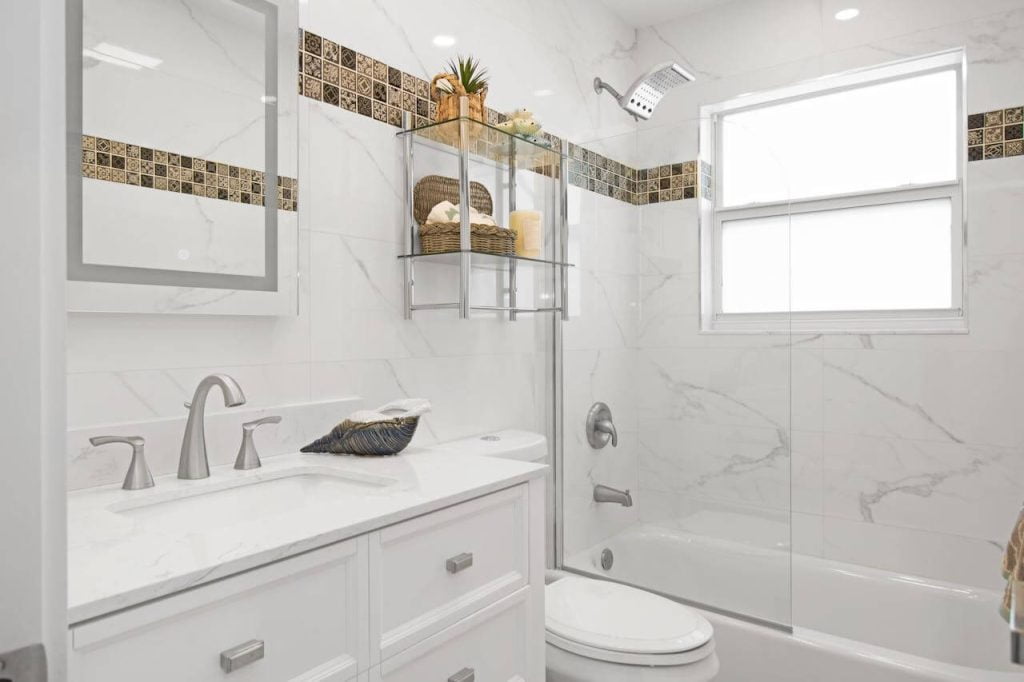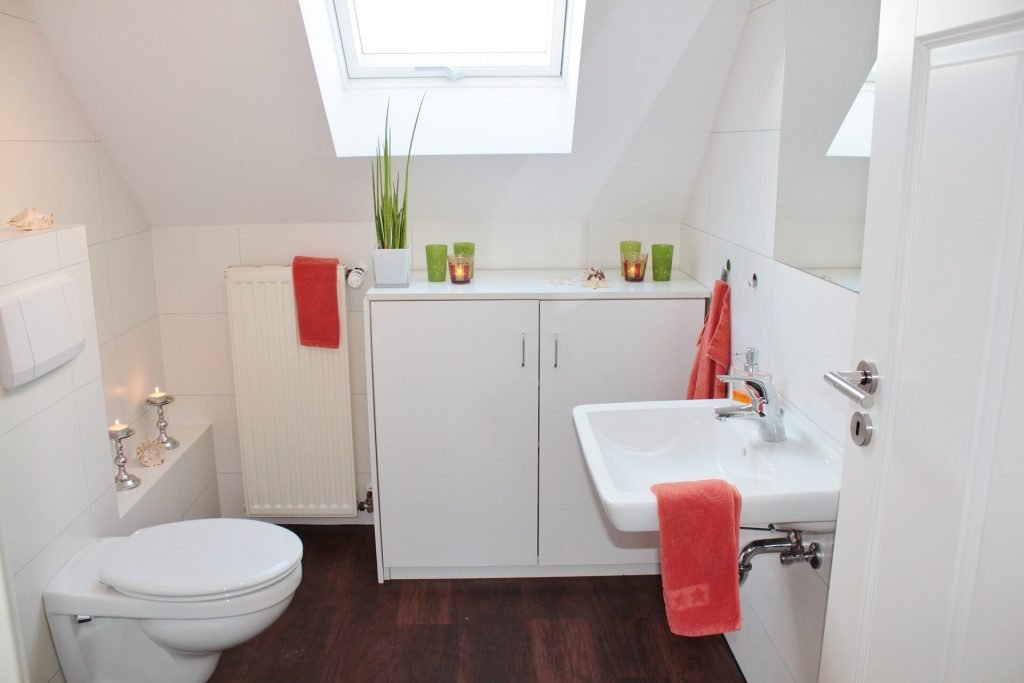How to Choose a Small Bathroom Vanity on a Budget: Tips and Tricks
Are you struggling to find the perfect small bathroom vanity that fits your budget? Look no further!

Choosing the right vanity can be a daunting task, especially when you’re on a budget. But don’t worry, we’re here to help. In this article, we’ll guide you through the process of selecting a small bathroom vanity that not only fits your budget but also meets your style and functionality needs.
Table of Contents
Dimensions For Small Bathroom Vanity
When choosing a small bathroom vanity, size is a crucial factor to consider. Bathroom vanities come in a wide range of sizes, so it’s important to know what to look for to ensure you choose the right one for your space. In this section, we’ll review some of the standard vanity dimensions and how to measure your space to find the perfect fit.
Small Bathroom Vanity Dimensions: Width, Height, and Depth
The common width of bathroom vanities typically ranges from 24 to 72 inches, with specific sizes set at 24, 30, 36, 48, 60, and 72 inches. The width refers to the distance from left to right, so be sure to measure your space accurately to ensure the vanity will fit.
The standard height of the vanity is usually between 34 and 36 inches, but taller vanities are available for taller adults. But as average height is on record high nowadays, some people found 36 inches is the most comfortable height for them.
When it comes to depth, the standard measurement is around 21 inches, with available depths ranging from 14 to 26 inches. However, it’s important to consider the size of your bathroom, the amount of storage space you need, and the clearance for drawers and doors to open. If you have a very small bathroom, consider choosing a shallow depth of 16 to 18 inches to save space. In a cramped space, it can go as low as 12 inches.
Materials for Small Bathroom Vanity
Another important factor to consider is the durability and cost of different vanity materials. While there are many materials to choose from, some of the most popular options include:
- MDF (Medium-density fiberboard): A budget-friendly option that is made by hot-pressing mixed wooden fibers and resins. Depending on the build quality, they may give a “fake wood” appearance and it may not be as long-lasting as other materials.
- Plywood: A durable wood product that has great resistance against water, excels in strength, and with high durability while still cheaper than solid wood.
- Solid Wood: A popular choice of vanity material due to its high durability, appearance, and longevity. At the same time, the price is higher than plywood and may require more maintenance over time but the aesthetic look and unique pattern and tone made up for its price.
- Glass: Vanities made of glass can be a great choice for contemporary bathrooms and are often easy to clean and maintain. This material looks stylish and elegant and blends well in modern bathrooms. Modern glass vanity is designed to be more durable and harder to scratch but they are still not as durable as other high durability materials.
- Marble: An elegant natural stone for a luxurious look that is durable and will last you for a long time. They complement well with traditional, modern, and minimalistic house styles. The downside of marble vanity is its expensive cost.
- Metal: A well-built metal vanity is sleek and modern, and often more durable than plywood or MDF. Similar to glass, metal is non-porous which will prevent water damage. It is highly durable and easy to maintain but it is typically on the pricier side.
Keep in mind that the cost of a vanity will also depend on its size, style, and features. For example, a vanity with a built-in sink will cost more than one without. By assessing your finances and understanding the cost of different materials, you can set a realistic budget for your small bathroom vanity purchase.
Recommended Features of Small Bathroom Vanity
Most of the features that are recommended for a small bathroom vanity are how to declutter the bathroom space, how to increase countertop space, and how to organize your small and big items better.
- Built-in outlet: A built-in outlet has been increasingly common. It enhances the convenience of your bathroom by making the power outlet accessible to power your beauty tools.
- Pull-out storage drawers: A pull-out function will increase your convenience. Furthermore, it can hide unwanted items away from your sight, like a trash bin.
- Put faucet on the wall: A wall faucet will free up your countertop spaces. As you get more countertop areas, it will enhance the cleanliness and easier to maintain. Additionally, it will also make your bathroom to be more minimalistic, sleek, and tidy.
- Different sizes and depths of storage units: Multiple storage units with different dimensions are becoming more common. They are great features for storing up multiple-size items like hairdryers, shavers, hand towels, and more. Keeping them tidy in place while preventing them from getting tangled with other items.
Having these small features on your small bathroom vanity will give you better accessibility and experience. Take a look at the small features when choosing your new vanity.
Designs for a Small Bathroom Vanity
When choosing a small bathroom vanity, it’s important to evaluate different styles and materials to find the perfect fit for your budget and design preferences.
Modern vs. Classic Designs
The first decision to make is whether you prefer a modern or classic design for your vanity. Modern designs tend to be sleek and minimalist, with clean lines and simple shapes. Classic designs, on the other hand, are more ornate and traditional, with decorative details and intricate carvings.
When choosing between modern and classic designs, consider the overall style of your bathroom. If you have a contemporary bathroom with clean lines and a minimalist aesthetic, a modern vanity may be the better choice. If your bathroom has a more traditional or ornate style, a classic vanity may be more appropriate.
The Ideal Space to Put Small Bathroom Vanity
The ideal spot to place your small bathroom vanity will depend on the layout, size, and arrangements of your bathroom. You will want to put your vanity in a spot where it’s comfortable and accessible for you. Here are some key factors to keep in mind:
- Near Plumbing: If you have existing plumbing lines, placing the vanity near them can save on installation costs and make the process easier.
- Optimize The Flow: Ensure the vanity doesn’t obstruct the door swing or impede movement within the bathroom. Provide sufficient clearance around the vanity for comfortable use.
- Utilize Corners: Corner vanities are perfect for small bathrooms as they make use of otherwise unused space. These can free up wall space and make the bathroom feel more open.
- Adjacent to the Toilet: Placing the vanity near the toilet can be convenient for handwashing. Ensure there is enough space between the two for comfortable use.
- Maximize Natural Light: If possible, place the vanity near a window to take advantage of natural light. Ensure the mirror above the vanity doesn’t block the window.
- Wall-Mounted Options: Floating vanities can be mounted on any wall, allowing for greater flexibility in placement. These can create a sense of more floor space and make the bathroom appear larger.
By considering these factors, you can find the perfect spot for your small bathroom vanity and create a functional and stylish space.
Optimizing Small Bathroom Vanity to Open Up Space
One of the biggest challenges of a small bathroom is finding enough storage space for your toiletries and other essentials. In addition to small vanity, there are also some visual tricks you can use to make your small bathroom feel more spacious. Here are some creative solutions to help you make the most of your small bathroom space:
- Floating Vanities: It is a great option for small bathrooms because they don’t take up as much floor space as traditional vanities. This can help create the illusion of more space and make your bathroom feel less cluttered.
- Utilize Vertical Space: Installing shelves or baskets on the walls above the vanity can be a great way to store towels, toiletries, and other essentials. This will help you keep your vanity clutter-free and make it easier to find what you need.
- Large Mirrors: Installing a large mirror above your vanity can help create the illusion of more space. Mirrors reflect light, which can make your bathroom feel brighter and more open.
- Invest in Drawer Dividers: Keep your vanity drawers organized by using dividers to separate items like makeup, brushes, and skincare products. This will not only help you save space but also make it easier to find what you need.
By using these innovative storage solutions and visual tricks, you can maximize your small bathroom space without sacrificing style.
Conclusion
When choosing a small bathroom vanity, there are a few things to consider. First and foremost, you need to determine your budget. Small bathroom vanities can range in price from a few hundred to a few thousand dollars, so it’s important to set a realistic budget before you start shopping. Once you have a budget in mind, you can start looking for vanities that fit within your price range. But keep in mind that just because a vanity is inexpensive doesn’t mean it’s low quality. With a little research, you can find a high-quality vanity that won’t break the bank.
FAQ
Budget Estimation for Small Bathroom Vanity
Start by taking a look at your overall budget. Consider how much money you have available for your bathroom renovation project. This will help you determine how much you can allocate to your vanity purchase.
When evaluating different materials, consider your budget, maintenance requirements, and overall design preferences. By taking the time to evaluate different styles and materials, you can find a small bathroom vanity that fits your needs and budget perfectly.
Lastly, consider any other expenses you may have related to your bathroom renovation. This includes things like plumbing, fixtures, and accessories. Be sure to set aside enough money for these expenses so you don’t overspend on your vanity.
Preparation Before Building Small Bathroom Vanity
Before you start shopping for a small bathroom vanity, it’s important to measure your space to ensure the vanity will fit. Here are some steps to follow:
- Measure the width of the space where you want to install the vanity.
- Measure the height of the space from the floor to the top of any existing elements, such as a window sill or medicine cabinet.
- Measure the depth of the space from the back wall to the front edge of any existing elements, such as a toilet or shower.
- Consider the swing of bathroom and shower doors, and leave enough space for them to open and close without hitting the vanity.
By following these steps and keeping standard vanity dimensions in mind, you’ll be able to choose the perfect small bathroom vanity for your budget and space.






